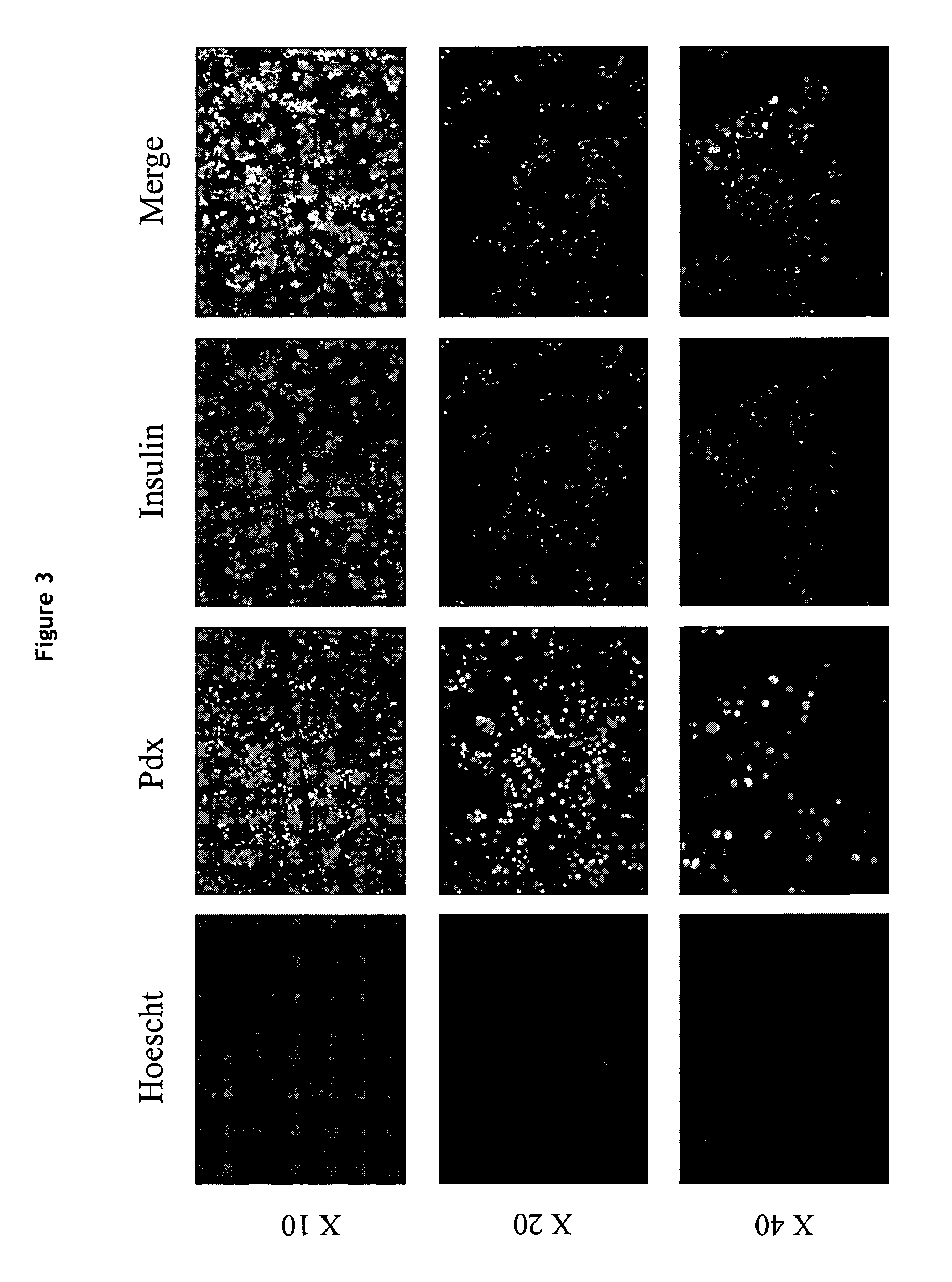Production of a human beta cell line from an early post natal pancreas
a pancreatic and beta cell technology, applied in the direction of genetically modified cells, instruments, tumor/cancer cells, etc., can solve the problems of insufficient function of beta cells to control glycemia, beta cells cannot be used for human diagnosis or therapy, and only embryonic pancreas can be obtained
- Summary
- Abstract
- Description
- Claims
- Application Information
AI Technical Summary
Benefits of technology
Problems solved by technology
Method used
Image
Examples
Embodiment Construction
DNA Constructs and Lentiviral Vector Productions
[0082]The lentiviral vectors, pTRIP ΔU3.RIP405-SV40LT loxP and pTRIP ΔU3.RIP405-hTERT loxP, have been constructed by adding a loxP site in the 3′LTR region of the pTrip ΔU3.RIP405-SV40LT / hTERT previously described (Ravassard et al, 2009). Both pTRIP ΔU3 vectors were digested by KpnI and Pad to remove the 3′LTR region. The 3′LTRloxP region of the SIN-RP-LTcDNA-WHV-U3loxP (provided by Bernard Thorens) was amplify by PCR and next digested by KpnI and Pad and then ligated into the two linearized pTrip vectors. The Lentiviral vector stocks were produced by transient transfection of 293T cells by encapsidation of the p8.9 plasmid (ΔVprΔVifΔVpuΔNef) (Zufferey et al, 1997), pHCMV-G that encoded the VSV glycoprotein-G) (Zufferey et al, 1997) and the pTRIP ΔU3 recombinant vector, as previously described (Zufferey et al., 1997). The supernatants were treated with DNAse I (Roche Diagnostic) prior to their ultracentrifugation, and the resultant pel...
PUM
| Property | Measurement | Unit |
|---|---|---|
| Electrical resistance | aaaaa | aaaaa |
| Homogeneity | aaaaa | aaaaa |
Abstract
Description
Claims
Application Information
 Login to View More
Login to View More - R&D
- Intellectual Property
- Life Sciences
- Materials
- Tech Scout
- Unparalleled Data Quality
- Higher Quality Content
- 60% Fewer Hallucinations
Browse by: Latest US Patents, China's latest patents, Technical Efficacy Thesaurus, Application Domain, Technology Topic, Popular Technical Reports.
© 2025 PatSnap. All rights reserved.Legal|Privacy policy|Modern Slavery Act Transparency Statement|Sitemap|About US| Contact US: help@patsnap.com


